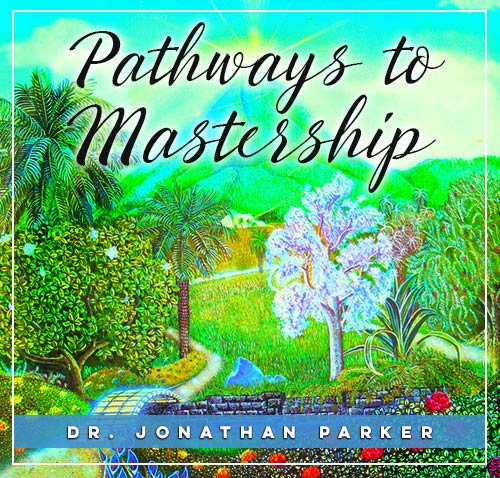Meditation Techniques for Beginners: Getting Started

Before diving in, please note: This post is for informational purposes only. If you’d like to know more about how we approach topics, feel free to check out our friendly Disclaimer Page.
Hey there, amazing readers! 🖐️ Just a quick note: yes, we know there are a lot of ads here. Trust us, we get it—it’s not the prettiest look, but they help us keep this blog alive and kicking. Those pesky little ads cover the costs of all the behind-the-scenes magic, from hosting and tech stuff to creating content we hope you’ll love.
We’re committed to delivering quality posts, and your support (even just sticking around despite the ads) means everything to us. So, bear with us, and thanks for helping us keep the good vibes rolling. Now, on to the fun stuff! 😉
TRANSLATE BUTTON AT THE END OF THE ARTICLE
A Quick Overview
Diving into meditation might feel like a leap into the unknown, but trust me, it’s an incredibly rewarding journey.
Whether you’re looking to reduce stress, improve focus, or simply find a bit of peace in your busy life, meditation can be a game changer.
As someone who once found the whole concept of sitting still and clearing my mind rather intimidating, I can assure you that the journey is worth it.
In this article, we’ll explore various meditation techniques that can help beginners like us get started on this path.
Welcome to the World of Meditation: A Quick Overview
Meditation isn’t a new fad; it’s been around for thousands of years.
Cultures across the globe have embraced it, each adding their unique spin.
The core idea of meditation involves training the mind, much like how one would train the body at the gym.
This practice can lead to a host of benefits, from heightened mindfulness to emotional resilience.
What’s great about meditation is that it doesn’t require any stringent rules or extensive experience.
You don’t need to be a monk or have spent years in silent retreats to benefit from it.
Even a few minutes a day can lead to noticeable changes.
Think of it as a little gift you give to yourself each day.
When I first started, I was overwhelmed by the vast array of techniques and advice out there.
It felt like I was trying to learn a new language.
But I soon realized that there’s no “right” way to meditate; it’s about finding what feels good for you.
So, let’s dive into the essentials together!
Understanding the Benefits of Meditation for Beginners
The benefits of meditation are as varied as the techniques themselves.
Here’s what I’ve found most impactful:
Stress Reduction: When life gets hectic, meditation can provide a sanctuary.
Studies show that just a few minutes of mindfulness can significantly reduce stress levels.
Improved Focus: I used to get distracted easily.
Regular meditation has sharpened my concentration and made it easier to tackle tasks.
Emotional Well-being: It has a way of bringing emotions to the surface, allowing for healing and understanding.
I’ve found that I handle my feelings better since starting this practice.
Better Sleep: Having trouble catching those Zs?
Meditation can calm racing thoughts, helping you drift off more easily.
Increased Self-awareness: It encourages you to check in with yourself.
Understanding my own thoughts has made me more empathetic towards others.
Anxiety Management: For those prone to anxiety, meditation can be a lifeline.
I’ve noticed a significant drop in my anxious feelings since I began practicing.
Enhanced Creativity: Clearer minds often lead to more innovative thoughts.
Explore the Path to Spirituality and Enlightenment – start here.
I’ve come up with some of my best ideas during or after meditation.
Emotional Resilience: Life throws curveballs; meditation can help you handle them with grace, reducing reactivity.
Physical Health Benefits: Some studies suggest that meditation can boost your immune system and lower blood pressure.
Community and Connection: Joining meditation groups can foster a sense of belonging and shared purpose.
If all these benefits sound appealing, then you’re definitely heading in the right direction!
Finding Your Ideal Meditation Space at Home
Creating a dedicated space for meditation can transform your experience.
It doesn’t have to be elaborate; it just needs to feel inviting.
Here are some tips from my own experience:
Choose a Quiet Spot: Find a place in your home where distractions are minimal.
This might be a corner of your living room, bedroom, or even a cozy nook by the window.
Make it Comfortable: You don’t need fancy cushions, but comfort is key.
A simple mat or a plush blanket can do wonders.
Add Personal Touches: Personalize the space with items that bring you joy or serenity—like plants, candles, or meaningful photos.
Control the Lighting: Natural light is lovely, but soft, ambient lighting can create an inviting atmosphere.
Soft lamps or fairy lights work well.
Keep it Clutter-Free: A tidy space can help clear your mind.
Try to keep the area organized and free from distractions.
Incorporate Nature: If possible, position your space so you can gaze outside at greenery or the sky.
Nature has a calming effect.
Use Aromatherapy: Scents can influence your mood.
A diffuser with essential oils or a scented candle can enhance your meditation experience.
Limit Distractions: Turn off your phone or put it on silent.
The less distraction, the better your focus will be.
Create a Routine: Having a dedicated space can help signal your brain that it’s time to meditate.
Practice Anywhere: Remember, you can meditate anywhere.
If you find peace in a park or your favorite coffee shop, go for it!
Essential Gear: What You Need to Get Started
The beauty of meditation is its simplicity.
You don’t need much to begin.
Here’s a list of essentials that have helped me:
Comfortable Clothing: Wear something that allows you to move freely.
Loose-fitting clothes work best.
A Mat or Blanket: If you plan to sit on the floor, having a yoga mat or soft blanket can provide comfort.
Meditation Cushion: If you find sitting on the floor uncomfortable, consider investing in a cushion for added support.
A Timer: It’s helpful to know how long you’ve been meditating.
You can use your phone’s timer, but I prefer a simple kitchen timer.
The gentle sound at the end feels less jarring.
Journal: Keeping a meditation journal can help track your thoughts and experiences.
It’s a great way to reflect on your journey.
Guided Meditations: While not essential, having access to guided sessions can make starting easier.
They can provide structure and inspiration.
Audio Equipment: If you’re using apps or online resources, good headphones can enhance the experience, especially during guided sessions.
A Comfortable Chair: If sitting on the floor isn’t your thing, a supportive chair works just as well.
A Blanket: If you meditate in a cooler room, a light blanket can keep you warm and cozy.
A Sense of Humor: Seriously!
Sometimes, things won’t go as planned, and that’s perfectly okay.
Laugh it off!
Breathing Basics: Your First Step in Meditation
Breathing is the cornerstone of meditation.
I remember when I first started, I underestimated its importance.
Let’s break it down:
Awareness of Breath: Before diving into meditation, simply sitting and noticing your breath can be a great introduction.
Just be aware of the inhale and exhale.
Deep Breaths: Begin with a few deep breaths.
Inhale slowly through your nose, filling your lungs, then exhale gently through your mouth.
It sets the tone.
Count Your Breaths: As you breathe, try counting.
Inhale for four counts, hold for four, then exhale for four.
This rhythm can help center your thoughts.
Focus on Sensations: Pay attention to the sensations of your breath—the rise and fall of your chest or the feeling of air entering your nostrils.
Let Thoughts Float By: If your mind wanders, don’t worry.
It’s normal!
Acknowledge the thought and gently bring your focus back to your breath.
Practice Abdominal Breathing: Breathe deeply into your abdomen rather than shallowly into your chest.
This provides a calming effect.
Use a Mantra: Repeating a simple phrase or word (like "calm" or "peace") with each breath can help maintain focus.
Visualize Your Breath: Imagine your breath as a color or a wave, flowing in and out.
Visualization can deepen your practice.
Establish a Rhythm: Find a natural breathing rhythm that feels comfortable.
It doesn’t have to be forceful; just let it flow.
Finish With Gratitude: After your session, take a moment to appreciate the breath.
It’s a simple yet profound tool we often overlook.
Exploring Different Meditation Styles and Techniques
With so many meditation styles to choose from, it can feel like a buffet of options.
Here are some techniques that I’ve explored and enjoyed:
Mindfulness Meditation: This is all about being present.
You focus on your thoughts and feelings without judgment.
It’s like watching clouds drift by.
Loving-Kindness Meditation: This technique encourages you to send love and kindness to yourself and others.
It really warms the heart.
Body Scan: Start from your head and slowly move to your toes, paying attention to each body part.
It’s a great way to unwind.
Guided Visualization: Here, you imagine a peaceful place or scenario.
This technique takes you on a mental vacation, and who doesn’t love that?
Transcendental Meditation: This involves silently repeating a mantra for 15-20 minutes.
It’s said to help you transcend your thoughts.
Zen Meditation (Zazen): A seated practice where you focus on your posture and breath.
It’s simple yet profound.
Chakra Meditation: This involves focusing on the body’s energy centers.
I find it fascinating and quite refreshing.
Walking Meditation: This is a moving form of meditation.
You focus on the sensations of walking, which can feel grounding.
Sound Bath Meditation: Here, you’re surrounded by sound frequencies, often from singing bowls or gongs.
It’s a unique experience that can be incredibly calming.
Breath Awareness: This is a more focused version of mindfulness, where the sole focus is on the breath.
It’s a powerful way to anchor yourself.
I encourage you to try a few styles and see what resonates with you.
Setting a Realistic Meditation Schedule for Yourself
Consistency is key to building a meditation habit, but it’s essential to be realistic.
Here’s how I’ve set my own schedule:
Start Small: If you’re new, begin with just 5 minutes a day.
Gradually increase the time as you feel comfortable.
Choose a Time: Early morning or before bed often works best for many.
Find a time that fits your routine and feels right for you.
Use Reminders: Setting a daily reminder can help keep meditation on your radar.
I use my phone alarm; it’s a gentle nudge.
Stay Flexible: Life is unpredictable.
If you miss a session, don’t beat yourself up.
Just get back on track the next day.
Connect with Others: If you have a friend or family member interested, meditate together.
It’s a great way to stay motivated.
Track Your Progress: Use a journal or app to note how often you meditate.
Seeing your progress can be a big motivator.
Incorporate Into Routine: Tie meditation to another daily habit—like brushing your teeth or brewing your morning coffee.
Be Kind to Yourself: If you’re having a tough day, it’s okay to adjust your schedule.
Meditation is about self-care.
Explore Different Times: Try meditating at different times of the day to see when you feel most at ease.
Celebrate Milestones: Reward yourself for sticking to your schedule.
It could be as simple as treating yourself to a nice cup of tea.
Guided Meditations: Perfect for Newcomers
When I started, guided meditations were a lifesaver.
They provided structure and direction.
Here’s why they’re great for beginners:
Ease of Use: A voice guiding you takes the pressure off.
You can just focus on following along.
Variety: There’s a guided session for nearly every need—stress relief, sleep, focus, or even creativity.
It’s like having a personal coach.
Length Options: You can find sessions as short as 3 minutes or as long as an hour.
Choose what fits your schedule.
Professional Guidance: Many guided meditations are led by experienced practitioners, offering insights that can deepen your practice.
Community: Some apps or platforms offer community features.
Engaging with others can enhance your experience.
Meditation Apps: There are countless apps available, like Headspace, Calm, or Insight Timer.
They make finding a session easy.
Podcasts: Some podcasts focus entirely on guided meditations, providing an audio experience you can listen to anytime.
YouTube Channels: Many meditation guides offer free sessions on YouTube.
It’s a treasure trove of resources.
Incorporate Nature Sounds: Some guided meditations include soothing nature sounds, making the experience even more immersive.
Experiment: Try a few different guides or styles to find the one that resonates with you.
Guided meditations can be a fantastic stepping stone as you establish your practice.
Overcoming Common Challenges When You Start
Starting anything new comes with its own set of challenges.
Here’s how to tackle some common hurdles in meditation:
Restlessness: It’s common to feel fidgety or restless.
Try focusing on your breath or using a mantra to center your thoughts.
Busy Mind: If your mind races, don’t worry!
Acknowledge the thoughts and gently bring your focus back.
It’s all part of the process.
Time Constraints: If you feel you don’t have time, remember that even a few minutes count.
Short sessions can be just as beneficial.
Feeling Discouraged: If you miss a day or feel you’re not improving, don’t be hard on yourself.
Progress looks different for everyone.
Physical Discomfort: If sitting hurts, experiment with different positions or use props like cushions or chairs.
Expectations: Let go of any pressure to achieve a specific result.
Meditation evolves with time and practice.
Comparisons: Everyone’s journey is unique.
Focus on your experience, not what others are doing.
Lack of Motivation: On days when you’re not feeling it, remind yourself of how good it feels after meditating.
It can help reignite your motivation.
Distractions: If noise or interruptions bother you, try meditating at a different time or using earplugs or white noise.
Emotional Release: If emotions arise, allow yourself to feel them.
This is a natural part of the process, and it’s okay to let it happen.
How to Use Apps and Resources for Your Practice
In this digital age, there’s no shortage of resources to support your meditation journey.
Here’s how to use them effectively:
Explore Different Apps: Start with popular apps like Calm, Headspace, or Insight Timer.
They often offer free trials or basic versions.
Check Out Online Courses: Platforms like Udemy or Coursera have meditation courses for beginners looking for more structured guidance.
Join Virtual Workshops: Many instructors offer workshops or classes online.
It’s a great way to deepen your practice.
Follow Meditation Channels on YouTube: There are plenty of channels that provide guided meditations, techniques, and tips.
It’s a treasure trove of free resources.
Read Books: There are numerous books on meditation that offer insights and techniques.
Some of my favorites include “The Miracle of Mindfulness” by Thich Nhat Hanh.
Podcasts: There are podcasts dedicated to meditation, mindfulness, and mental well-being.
They can provide inspiration and motivation.
Connect with Online Communities: Many apps and forums have communities where you can share experiences and tips.
Connecting with others can keep you motivated.
Use Social Media: Follow meditation influencers or pages on platforms like Instagram or Facebook for daily inspiration and tips.
Experiment with Different Resources: What works for one person may not work for another.
Don’t hesitate to try various resources until you find what resonates.
Set Goals: Many apps allow you to set goals and track your progress.
This can be a great way to stay accountable.
Keeping a Meditation Journal: Track Your Progress
Maintaining a meditation journal has been a game changer for me.
It’s a great way to reflect, track progress, and deepen your practice.
Here’s how to do it effectively:
Daily Entries: Write about your experiences each day.
Note what type of meditation you practiced and how you felt afterward.
Reflect on Challenges: If you faced any hurdles during your practice, jot them down.
Reflecting on them can provide insights for next time.
Track Your Progress: Include how long you meditated and any improvements you notice over time.
It can be encouraging to see your growth.
Write About Insights: If you have any realizations or thoughts during meditation, write those down.
They can be profound.
Set Intentions: Use your journal to set intentions for your practice or for the day.
This can give you a sense of purpose.
Record Quotes or Affirmations: If you come across quotes that resonate with you, write them down for inspiration.
Celebrate Milestones: Acknowledge your progress in your journal.
Whether it’s a week of consistent practice or a new technique learned, celebrate it!
Include Drawings or Doodles: If you’re creatively inclined, incorporate visuals to express your thoughts.
Review Regularly: Take time to go back and read your entries.
It can be eye-opening to see how far you’ve come.
Be Kind to Yourself: Your journal is a safe space.
Write openly and honestly without judgment.
Cultivating a Positive Mindset for Your Meditation Journey
The right mindset can make all the difference in your meditation practice.
Here are some tips I’ve found helpful:
Be Patient: Understand that meditation is a skill that takes time to develop.
Patience is your best friend here.
Stay Curious: Approach your practice with an open mind.
Each session is an opportunity to learn something new.
Practice Self-Compassion: It’s okay to have off days.
Treat yourself with the same kindness you would offer a friend.
Let Go of Perfection: There’s no “perfect” way to meditate.
Allow yourself to embrace the messiness of the process.
Create a Supportive Environment: Surround yourself with positivity.
Engage with supportive communities or friends.
Visualize Success: Imagine how meditation will positively impact your life.
This can motivate you to continue.
Embrace Change: Your practice may evolve over time.
Welcome these changes instead of resisting them.
Focus on the Present: Try not to dwell on past sessions or worry about future ones.
Each moment is a fresh start.
Celebrate Small Wins: Acknowledge and appreciate the small steps in your journey.
Each one is a victory.
Stay Inspired: Read books, listen to podcasts, or watch videos about meditation to keep your enthusiasm alive.
Conclusion
Embarking on a meditation journey is like planting a seed in your life.
With time, care, and practice, it can blossom into something beautiful.
Remember, it’s all about progress, not perfection.
Embrace the ups and downs, and don’t hesitate to reach out for support when needed.
As you explore different techniques and styles, you’ll find what resonates with you.
So here’s to our shared journey into mindfulness and tranquility.
Happy meditating!

The Enlightenment Journey is a remarkable collection of writings authored by a distinguished group of experts in the fields of spirituality, new age, and esoteric knowledge.
This anthology features a diverse assembly of well-experienced authors who bring their profound insights and credible perspectives to the forefront.
Each contributor possesses a wealth of knowledge and wisdom, making them authorities in their respective domains.
Together, they offer readers a transformative journey into the realms of spiritual growth, self-discovery, and esoteric enlightenment.
The Enlightenment Journey is a testament to the collective expertise of these luminaries, providing readers with a rich tapestry of ideas and information to illuminate their spiritual path.
Our Diverse Expertise 🌟
While our primary focus is on spirituality and esotericism, we are equally passionate about exploring a wide range of other topics and niches 🌍📚. Our experienced team is dedicated to delivering high-quality, informative content across various subjects ✨.
To ensure we provide the most accurate and valuable insights, we collaborate with trusted experts in their respective domains 🧑🏫👩🏫. This allows us to offer well-rounded perspectives and knowledge to our readers.
Our blog originally focused on spirituality and metaphysics, but we’ve since expanded to cover a wide range of niches. Don’t worry—we continue to publish a lot of articles on spirituality! Frequently visit our blog to explore our diverse content and stay tuned for more insightful reads.







